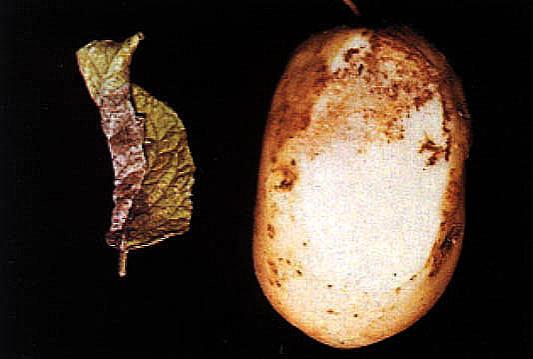Kvalitetssäkring
Provning och kvalitetsarbete SMAK´s system för att klassificera potatis och analysera kvalitén...
Phytophtora infestans
Utifrån sett märks sjukdomen som brunaktiga skiftningar under skalet. När rötan blir äldre, mörknar angripna partier och blir något insjunkna. Snitt genom skadan visar en oregelbunden brun, torr röta, som kan tränga genom hela knölen. Brunfärgande partier i knölköttet kan vara symptom på brunröta, endast om de har någon förbindelse med knölens yta.
Angreppet orsakas av svampen Phytophthora infestans, som via smittat utsäde eller luftburna sporer infekterar blasten (bladmögel), varifrån bildade sporangier kan falla till marken och genom främst ögon och lenticeller infektera knölen.
Rötan utvecklas kraftigare vid högre temperatur och kan övergå i Fusariumröta och Blötröta. Rötan kan hållas helt under kontroll genom bladmögelbekämpning.

Late blight
Externally, the disease can first be seen as brownish patches under the skin. As the rot progresses, the affected site grows darker and somewhat depressed. A cut through the diseased tissue shows an irregular, brown dry rot, which can spread through the entire tuber. Brown areas in the flesh of the tuber can indicate the presence of late blight only if they are in contact with the surface of the tuber.
The disease is caused by the Phytophtora infestans fungus which, through infected seed or airborne spores, infects the leaves, from which developed sporangia can fall to the ground and, primarily through eyes and pores, infect the tuber.
The blight develops more vigorously in higher temperatures and can change into dry rot and bacterial soft rot. The disease can be kept under complete control by combating the leaf infection.